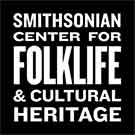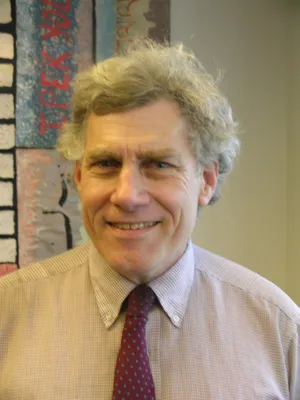SMITHSONIAN CENTER FOR FOLKLIFE & CULTURAL HERITAGE
Hearing the Voices of Deaf Culture at the 1981 Folklife Festival
The landmark event introduced many hearing visitors to the stories, poems, sign play, jokes and traditions of the deaf community
:focal(600x400:601x401)/https://tf-cmsv2-smithsonianmag-media.s3.amazonaws.com/filer_public/a2/32/a232a966-2de4-42ff-8044-0dbff6f910b7/81-7596-36a.jpeg)
Forty years ago, the Smithsonian Folklife Festival (known then as the Festival of American Folklife) presented a landmark event in the history of Deaf Culture. The 1981 Festival program To Hear a Hand: Folklore and Folklife of the Deaf introduced for many hearing visitors some of the stories, poems, sign play, jokes, and traditions of the Deaf Community—all conveyed through the richness of American Sign Language.
To Hear a Hand came to life through the synergy of several concurrent events. One was the pioneering research of Simon Carmel, who had been collecting examples of Deaf Folklore for many years. As Carmel told me, “I loved collecting both Deaf and hearing clean and dirty jokes and other stories for my private collection while I was working as a physicist for twenty years,” which led to his teaching a class on Deaf Culture and Deaf Folklore at Gallaudet University in fall 1977.
At the American Folklore Society’s annual meeting in 1980, Carmel presented a session on Deaf Folklore, which he co-organized with Jo Radner, who was teaching folklore, Celtic studies, and English literature at American University. Radner had met Carmel through Stephanie Hall, one of Radner’s graduate students in folklore, whose grandfather, Percival Hall, was Gallaudet’s second president, and whose grandmother, Ethel Taylor Hall, was one of the first Deaf women to earn a bachelor’s degree and to advocate for Deaf women’s rights and higher education. Hall’s mother, father, and uncle all were faculty members at Gallaudet.
Jack Santino, a folklorist with the Smithsonian’s Office of Folklife Programs (known now as the Center for Folklife and Cultural Heritage), was aware of these activities and proposed a program on Deaf Culture several times to Ralph Rinzler, the Festival’s founding director. As Santino recalled, “At a staff meeting, out of the blue, Ralph said to me, ‘Why don’t you do a Deaf Program for this year’s Festival? You’re always talking about it, so now’s your chance,’ or words to that effect.” One impetus for Rinzler’s decision may have been that the United Nations had declared 1981 as the International Year of Disabled Persons.
Santino and Rinzler hired Carmel and Radner in early 1981 to co-curate the program with assistance from Hall and others. By the time the Festival opened on the National Mall on June 24, 1981, they had arranged a multifaceted program with several elements.
There were storytelling sessions and workshops, in which Deaf participants shared traditions of Deaf Culture—including jokes, riddles, sign play, personal experiences, and games. Session titles included “Deafness in a Hearing World,” “Deafness in the Family,” “Favorite Deaf Heroes,” “Legends in the Deaf Community,” and “Hazards of Being Deaf.” Also featured were performances by Studio 101, a Deaf acting company; presentations on “The Beauty and Poetry of American Sign Language (ASL),” which highlighted the richness of the language; classes for visitors in ASL; and an exhibition of practical devices from doorbell signals and wake-up alarms to modern telecommunications equipment.
In retrospect, the timing of the Smithsonian event seems most propitious. As Radner recalled, “It was a very interesting time to be involved with the Deaf Community. Deaf politics were just coming into their own.” Moreover, as Brian Greenwald, professor of history and director of the Schuchman Deaf Documentary Center at Gallaudet, told me, the Festival program took place the same year as the publication of Jack R. Gannon’s seminal book, Deaf Heritage: A Narrative History of Deaf America.
/https://tf-cmsv2-smithsonianmag-media.s3.amazonaws.com/filer_public/a8/73/a8738de6-9ecd-44c3-853e-6cd2f705f3ad/81-7910-18a-19.jpeg)
“The Festival and the growing corpus of scholarship were part of a larger trend of surging outward pride, where stories, jokes, and other elements of Deaf Culture were shared with the wider audience that was seldomly seen previously,” Greenwald explained. “As a Deaf child born to hearing parents, I grew up without access to stories about Deaf people and missed untold numbers of Deaf jokes and opportunities to learn about the history of Deaf people.”
/https://tf-cmsv2-smithsonianmag-media.s3.amazonaws.com/filer_public/e5/dc/e5dc545a-af64-4703-be9f-b2e44c842ca9/81-7910-8a-9.jpeg)
Although Greenwald did not attend the 1981 Festival, he noted how important those stories were at the time. “Stories are one of the most powerful tools we have as humans. They would come cascading later in my life as I found my way to the Deaf Community.”
One of Greenwald’s faculty colleagues, William Ennis, associate professor of history at Gallaudet, was at the Festival—as a twelve-year-old, watching his father Bill Ennis perform. “My father was a master storyteller,” Ennis told me. “The way that he could weave so many details into his storytelling performances was something special. That is the essence of what Deaf stories are made of—not linear English words, but rather the masterful use of the whole body to provide a three-dimensional story. Those kinds of stories and American Sign Language are the backbone of Deaf Culture.”
/https://tf-cmsv2-smithsonianmag-media.s3.amazonaws.com/filer_public/66/59/66593ed4-9826-45f7-a111-f88d8dbfaf49/faf1981_deaf_gesture_prt.jpeg)
When asked during the 1981 Festival if there might be another Deaf Culture program in the coming years, Rinzler replied, “I can’t answer that question right now until a whole bunch of us sit down and try to figure out what the shape of the Festival will be next year. But it seems very likely—now that we’ve gotten ourselves thinking about this kind of a program—there is every reason to assume that it will come back, if not next year, in two years or three years.”
Unfortunately, no such program has emerged since then—as Zachary Tumlin will expand upon in a Folklife Magazine article tomorrow. However, one may hope that the type of synergy from forty years ago may soon reemerge in our post-pandemic world.
Other Resources from the 1981 Festival Program
“To Hear a Hand: Deaf Folklore and Deaf Culture,” article by Jo Radner and Simon Carmel published in the 1981 Festival program book
52 videos, archived by Gallaudet University
Transcriptions of audio recordings, collected by the Smithsonian Transcription Center
Transcriptions of audio logs, collected by the Smithsonian Transcription Center
Audio recordings and transcripts of conversations, collected by the Smithsonian Transcription Center



